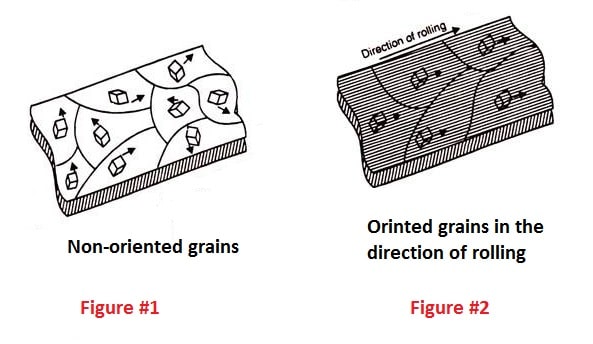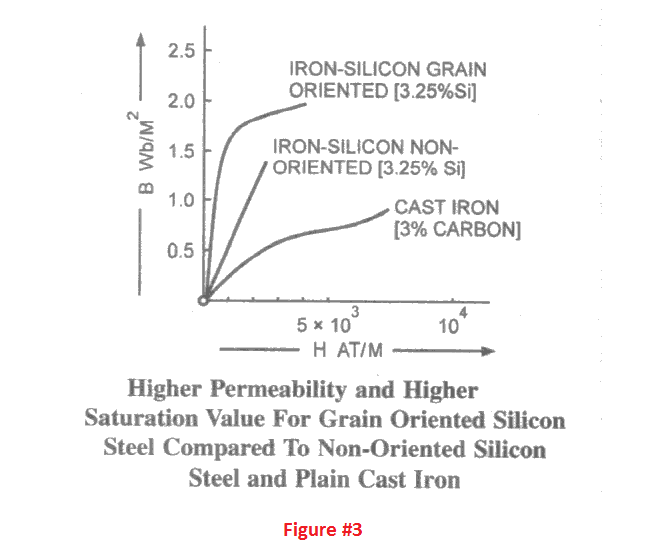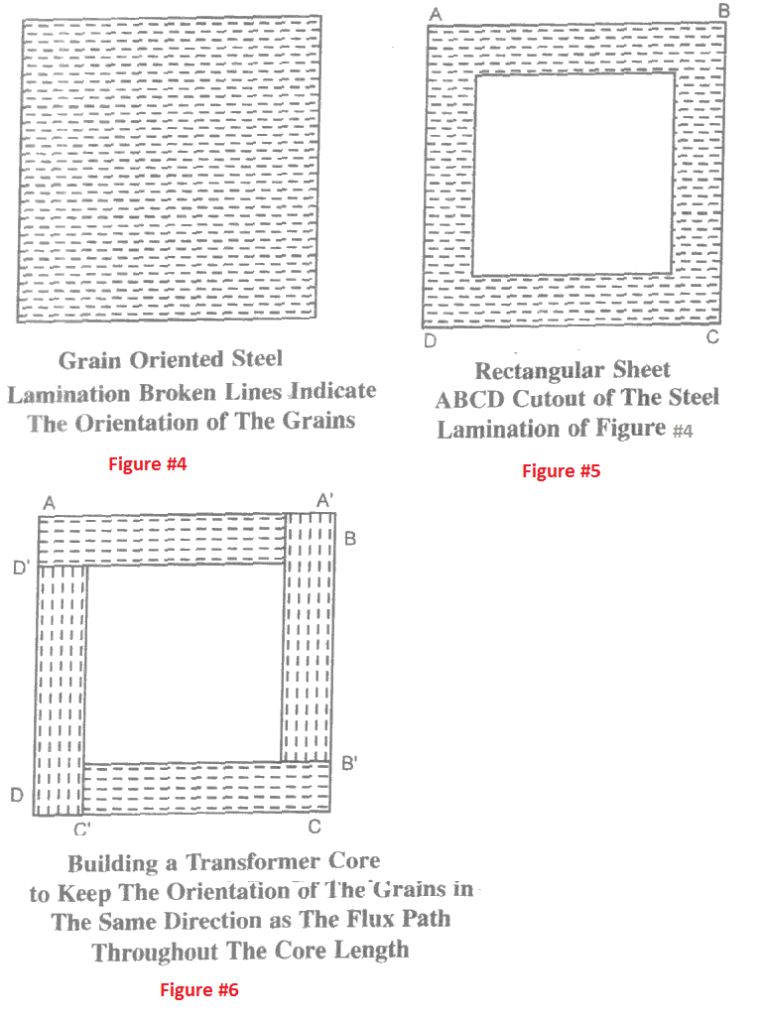Ferromagnetic materials have a crystal structure which means that they are made up of crystals. Every crystal of a ferromagnetic substance has a particular direction along which it offers high permeability and is, therefore, most easily magnetized. Such axes, along which the crystals have high permeability and are more easily magnetized, are called the “preferred” or “easy” or “soft” directions.
Along any axis other than the easy direction, the crystal has low permeability and is, therefore, more difficult to magnetize. Such axes along which the crystal has low permeability are called “hard” directions.
From the above discussion, it is evident that for easy magnetization the crystal directions of electrical sheet steel should be so oriented that their axes are paralleled to the direction in which the external magnetic field is applied. This is achieved in practice by carefully controlling the rolling and annealing of silicon-iron sheets. The directions of easy magnetization then lie in the direction in which the steel is rolled in the mill.
What is CRGO core?
Sheet steel which has been rolled such as to give easy direction to all its crystals is called “textured” or “grain-oriented” steel. Figure #1 shows sheet steel with unfavorably oriented (or non-oriented) grains.

Figure #2 shows sheet steel the grains of which are oriented in the direction of rolling. It is easier to magnetize the grain-oriented sheet shown in Fig. #2 in the rolling direction than the randomly oriented (or non-oriented) sheet shown in Fig. #1.
Non-oriented sheets require a higher magnetizing field to magnetize them. Figure #3 illustrates the great advantages of higher permeability and higher saturation value obtained from non-oriented silicon steel over plain cast iron and even greater advantage of grain-oriented silicon steel over the non-oriented silicon steel.

Hysteresis loss is also reduced as a result of grain orientation. The grain orientation (or texturing) of silicon steel is obtained by a special manufacturing technique called cold rolling. Sheet steel obtained as a result of such a process is called Cold Rolled Grain Oriented silicon steel (more commonly called CRGO).
Why CRGO core is used in transformers?
CRGO silicon-steel is widely used for making transformer cores. The magnetizing current required by transformers using CRGO steel is low. If non-oriented steel was used, we would need a certain amount of magnetizing force to establish flux in the core (i.e. to magnetize the core). The magnetizing force should be sufficient to force the domains whose axes are widely divergent from the applied field axis, to come into alignment with (i.e. to be parallel to) axis of the applied field.
With grain oriented sheets the domains are not markedly divergent from alignment and the magnetizing force required to magnetize the core is small. This is why the magnetizing current of transformers using CRGO steel is considerably low.
It is important to bear in mind that when using CRGO steel to build transformer cores care must be taken to assemble the core in such a manner that the crystal direction is parallel to the flux path because otherwise, the core will offer high reluctance (low permeability than high permeability).
How does CRGO core offer high permeability?
To understand this, consider a grain-oriented lamination of steel as shown in Figure #4.

Let us cut out a rectangular core ABCD, as shown in Figure #5, out of it. If we build a thick core by assembling such laminations we shall have a transformer core. If a current-carrying coil is placed around the limb AD it is obvious that flux will be set up perpendicular to the grain orientation along with the limbs AD and BC and parallel to the grain orientations along with the limbs AB and DC. Thus to magnetize the portion AD and BC will call for a large magnetizing current.
If, however, we cut from the original (Figure #5) four small rectangular sheets AA’, BR, CC’, DD’ and assemble them as shown in Figure #6 and then build the required thickness of the core it is obvious that in this arrangement the flux path will always be parallel to the grain orientation except at the four corners. The difficulties at the four corners are also over-come to a large extent by the special design of the core.
Can we use CRGO core in motors?
The advantage of grain orientation cannot, however, be generally utilized in the construction of the magnetic core for electrical rotating machines like motors. The cores of rotating machines are circular and if a circular core like the one shown in Figure #7 is cut out of a CRGO sheet steel, it is obvious that in most of the iron path the grains are not oriented in the direction of flux.

To use CRGO sheet steel as core material for rotating machines with advantage the core will have to be assembled from a large number of sections but this still will not result in the grain orientations completely parallel with the flux path because of the circular nature of the cores of rotating machines.
Besides, assembling the core from sections of sheet steel will make the construction difficult and expensive. For very large machines, however, the additional expense and difficulty in construction will still be advantageous because of the resulting low losses with CRGO sheet stampings. Reduced losses mean low running losses which are a great consideration in large machine.
The magnetic properties of ferromagnetic materials are adversely affected by strain due to mechanical working like punching, milling, grinding, machining, etc. The magnetic properties including the correct crystal direction in the case of CRGO sheet can be restored by heat treatment (annealing). Since mechanical stressing disturbs the crystal orientation, it is essential to perform that treatment once again, after all, mechanical operations have been completed.
Thanks for reading about “Why CRGO core is used in transformers?”.
Related Posts
- Dia Para Ferro Magnetic Materials
- Applications of Soft and Hard Magnetic Materials
- Why CRGO core is used in transformers?
- Properties of High Resistivity Materials
- Properties of Insulating Materials
- Applications of Insulating Materials
- Properties of Superconductors
- Dielectric Strength | Constant | Loss | Definition
- Creep in Materials